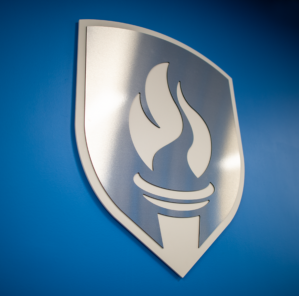Science Questions & AnswersScience Questions & Answers
These are some questions that Friendship students have asked!
1.) What is the largest size hail ever recorded?
8 inches in diameter, 2 pounds in 2010 in South Dakota
http://www.noaa.gov/features/02_monitoring/hailstone.html
2.) If warm air rises, then why are mountains cold?
As warm as rises, it cools so when it reaches the height of the mountains it is cooler.
3.) What is the most recent hurricane?
2013 Hurricane Names
http://www.nhc.noaa.gov/?epac
Andrea (developed June 5, made landfall in Florida)
Barry (developed June 19, made landfall in Mexico)
Chantal (developed July 8, never makes landfall)
Dorian (developed July 24, never makes landfall)
Erin (developed August 14……)
Fernand
Gabrielle
Humberto
Ingrid
Jerry
Karen
Lorenzo
Melissa
Nestor
Olga
Pablo
Rebekah
Sebastien
Tanya
Van
Wendy
4.) Why do snowflakes have designs?
As water vapor rises into the colder upper atmosphere it cools, and when chilled enough condenses into infinitesimal water droplets, which commonly form around particles of dust, sea salt, etc, known as nucleation sites. If the temperature keeps dropping, eventually the droplets freeze into ice crystals. These crystals start out as tiny hexagonal prisms – the hex shape resulting from the angle formed between oxygen atoms as the frozen water molecules line up. Under the right conditions, additional moisture condenses directly onto the crystal and freezes too. Since the corners where the crystal faces meet project further into the surrounding vapor than the flat sides, they accumulate ice faster, typically producing the familiar six-branched snowflake.
http://earthsky.org/earth/how-do-snowflakes-get-their-shape
5.) What is a supercell?
Supercells are the least common type of thunderstorm, but they have a high propensity to produce severe weather, including damaging winds, very large hail, and sometimes weak to violent tornadoes. What makes a supercell unique from all other thunderstorm types is that it contains a deep and persistent rotating updraft called a mesocyclone.
http://www.srh.noaa.gov/ama/?n=supercell
6.) Why can we not feel the Earth rotating?
You don’t feel the Earth spin because you, the atmosphere, skyscrapers, and everything else are spinning along with the Earth at the same constant speed. It’s the same sensation as when you’re riding in a car or flying in a plane – as long as the ride is going smoothly.
http://earthsky.org/earth/why-cant-we-feel-earths-spin
7.) Why do different parts of the US have different climates if we are all pretty much tilted toward the sun the same amount?
Our climate system is based on the location of these hot and cold air-mass regions and the atmospheric circulation created by trade winds and westerlies.
http://www.blueplanetbiomes.org/climate.htm
8.) What causes Aurora Borealis or the Northern Lights?
It is the result of colliding particles in the atmosphere with charged particles from the sun. It is easily seen by the poles because it has the least air pollution. The different colors are determined by the types of gases that are colliding.
http://www.northernlightscentre.ca/northernlights.html
9.) How can I remember the layers of the atmosphere?
Tropical Sugary Mangoes Taste Incredibly Excellent
(Troposphere, Stratosphere, Mesosphere, Thermosphere, Ionosphere, Exosphere)
OR
The Silly Mouse TrIes to Escape
10.) What is density?
The mass of a substance in a unit of volume. Cold water and air is more dense (heavy) then warm air or water because warm particles are moving faster and further apart so there is less of them in one space. Cold air or water particles tend to stay closer together so there are more of them in one space.
http://www.ebsinstitute.com/Baseball/EBS.crp2df2.html
11.) What is a monsoon?
It is a seasonal shift of the wind direction, from over water to land. In the winter it causes a dry season and in the winter is causes a wet season with torrential (very heavy) rains.
http://www.weatherquestions.com/What_is_a_monsoon.htm
12.) Can you fly in a jet stream to reduce flight time?
Airplanes want to find them to save time and gas, but there is often turbulence that could be hazardous associated with them.
http://www.aviator.edu/129/section.aspx/59/principles-of-HYPERLINK
13.) What is the difference between clouds and fog?
Clouds and fog are the same thing, but fog forms at Earth’s surface, and clouds form in the sky. They both form in areas of low pressure. Low pressure changes locations based on the unequal heating of Earth’s surface.
14.) What is the most common type of volcano?
Cinder cone
15.) What type of volcano is known to be the most dangerous?
Cinder cone because they are the most explosive.
16.) What is the difference between ash and cinders?
Ash is smaller than cinders.
17.) Why do most babies have blue eyes?
The melanin hasn’t fully deposited in the iris and they haven’t been darkened by UV light. This usually is stable by 6 months. It can also be changed by medicine and environmental factors.
18.) Why do some people have two different colored eyes?
This is called heterochromia when the amount and distribution of the melanin isn’t the same and is inherited from the parents. It could also be a symptom of a disorder or an eye injury.
19.) What is the difference between a solar eclipse and a lunar eclipse?
Solar is when the moon passes between the Earth and sun. Lunar is when the Earth passes between the sun and the moon.
20.) What is the largest amount of aftershocks ever recorded?
There was over 5,229 aftershocks recorded in Japan over a year after the initial earthquake in March 2011.
http://www.livescience.com/20519-japan-earthquake-aftershocks.html
21.) What is a whirpool?
When there are tidal changes in the ocean waves and fast moving water goes through a narrow straight. Gravity makes the water spin in a downward motion.
http://www.spiralwishingwells.com/guide/whirlpools.html
These are some questions that Friendship students have asked!
1.) What is the largest size hail ever recorded?
8 inches in diameter, 2 pounds in 2010 in South Dakota
http://www.noaa.gov/features/02_monitoring/hailstone.html
2.) If warm air rises, then why are mountains cold?
As warm as rises, it cools so when it reaches the height of the mountains it is cooler.
3.) What is the most recent hurricane?
2013 Hurricane Names
http://www.nhc.noaa.gov/?epac
Andrea (developed June 5, made landfall in Florida)
Barry (developed June 19, made landfall in Mexico)
Chantal (developed July 8, never makes landfall)
Dorian (developed July 24, never makes landfall)
Erin (developed August 14……)
Fernand
Gabrielle
Humberto
Ingrid
Jerry
Karen
Lorenzo
Melissa
Nestor
Olga
Pablo
Rebekah
Sebastien
Tanya
Van
Wendy
4.) Why do snowflakes have designs?
As water vapor rises into the colder upper atmosphere it cools, and when chilled enough condenses into infinitesimal water droplets, which commonly form around particles of dust, sea salt, etc, known as nucleation sites. If the temperature keeps dropping, eventually the droplets freeze into ice crystals. These crystals start out as tiny hexagonal prisms – the hex shape resulting from the angle formed between oxygen atoms as the frozen water molecules line up. Under the right conditions, additional moisture condenses directly onto the crystal and freezes too. Since the corners where the crystal faces meet project further into the surrounding vapor than the flat sides, they accumulate ice faster, typically producing the familiar six-branched snowflake.
http://earthsky.org/earth/how-do-snowflakes-get-their-shape
5.) What is a supercell?
Supercells are the least common type of thunderstorm, but they have a high propensity to produce severe weather, including damaging winds, very large hail, and sometimes weak to violent tornadoes. What makes a supercell unique from all other thunderstorm types is that it contains a deep and persistent rotating updraft called a mesocyclone.
http://www.srh.noaa.gov/ama/?n=supercell
6.) Why can we not feel the Earth rotating?
You don’t feel the Earth spin because you, the atmosphere, skyscrapers, and everything else are spinning along with the Earth at the same constant speed. It’s the same sensation as when you’re riding in a car or flying in a plane – as long as the ride is going smoothly.
http://earthsky.org/earth/why-cant-we-feel-earths-spin
7.) Why do different parts of the US have different climates if we are all pretty much tilted toward the sun the same amount?
Our climate system is based on the location of these hot and cold air-mass regions and the atmospheric circulation created by trade winds and westerlies.
http://www.blueplanetbiomes.org/climate.htm
8.) What causes Aurora Borealis or the Northern Lights?
It is the result of colliding particles in the atmosphere with charged particles from the sun. It is easily seen by the poles because it has the least air pollution. The different colors are determined by the types of gases that are colliding.
http://www.northernlightscentre.ca/northernlights.html
9.) How can I remember the layers of the atmosphere?
Tropical Sugary Mangoes Taste Incredibly Excellent
(Troposphere, Stratosphere, Mesosphere, Thermosphere, Ionosphere, Exosphere)
OR
The Silly Mouse TrIes to Escape
10.) What is density?
The mass of a substance in a unit of volume. Cold water and air is more dense (heavy) then warm air or water because warm particles are moving faster and further apart so there is less of them in one space. Cold air or water particles tend to stay closer together so there are more of them in one space.
http://www.ebsinstitute.com/Baseball/EBS.crp2df2.html
11.) What is a monsoon?
It is a seasonal shift of the wind direction, from over water to land. In the winter it causes a dry season and in the winter is causes a wet season with torrential (very heavy) rains.
http://www.weatherquestions.com/What_is_a_monsoon.htm
12.) Can you fly in a jet stream to reduce flight time?
Airplanes want to find them to save time and gas, but there is often turbulence that could be hazardous associated with them.
http://www.aviator.edu/129/section.aspx/59/principles-of-HYPERLINK
13.) What is the difference between clouds and fog?
Clouds and fog are the same thing, but fog forms at Earth’s surface, and clouds form in the sky. They both form in areas of low pressure. Low pressure changes locations based on the unequal heating of Earth’s surface.
14.) What is the most common type of volcano?
Cinder cone
15.) What type of volcano is known to be the most dangerous?
Cinder cone because they are the most explosive.
16.) What is the difference between ash and cinders?
Ash is smaller than cinders.
17.) Why do most babies have blue eyes?
The melanin hasn’t fully deposited in the iris and they haven’t been darkened by UV light. This usually is stable by 6 months. It can also be changed by medicine and environmental factors.
18.) Why do some people have two different colored eyes?
This is called heterochromia when the amount and distribution of the melanin isn’t the same and is inherited from the parents. It could also be a symptom of a disorder or an eye injury.
19.) What is the difference between a solar eclipse and a lunar eclipse?
Solar is when the moon passes between the Earth and sun. Lunar is when the Earth passes between the sun and the moon.
20.) What is the largest amount of aftershocks ever recorded?
There was over 5,229 aftershocks recorded in Japan over a year after the initial earthquake in March 2011.
http://www.livescience.com/20519-japan-earthquake-aftershocks.html
21.) What is a whirpool?
When there are tidal changes in the ocean waves and fast moving water goes through a narrow straight. Gravity makes the water spin in a downward motion.
http://www.spiralwishingwells.com/guide/whirlpools.html



